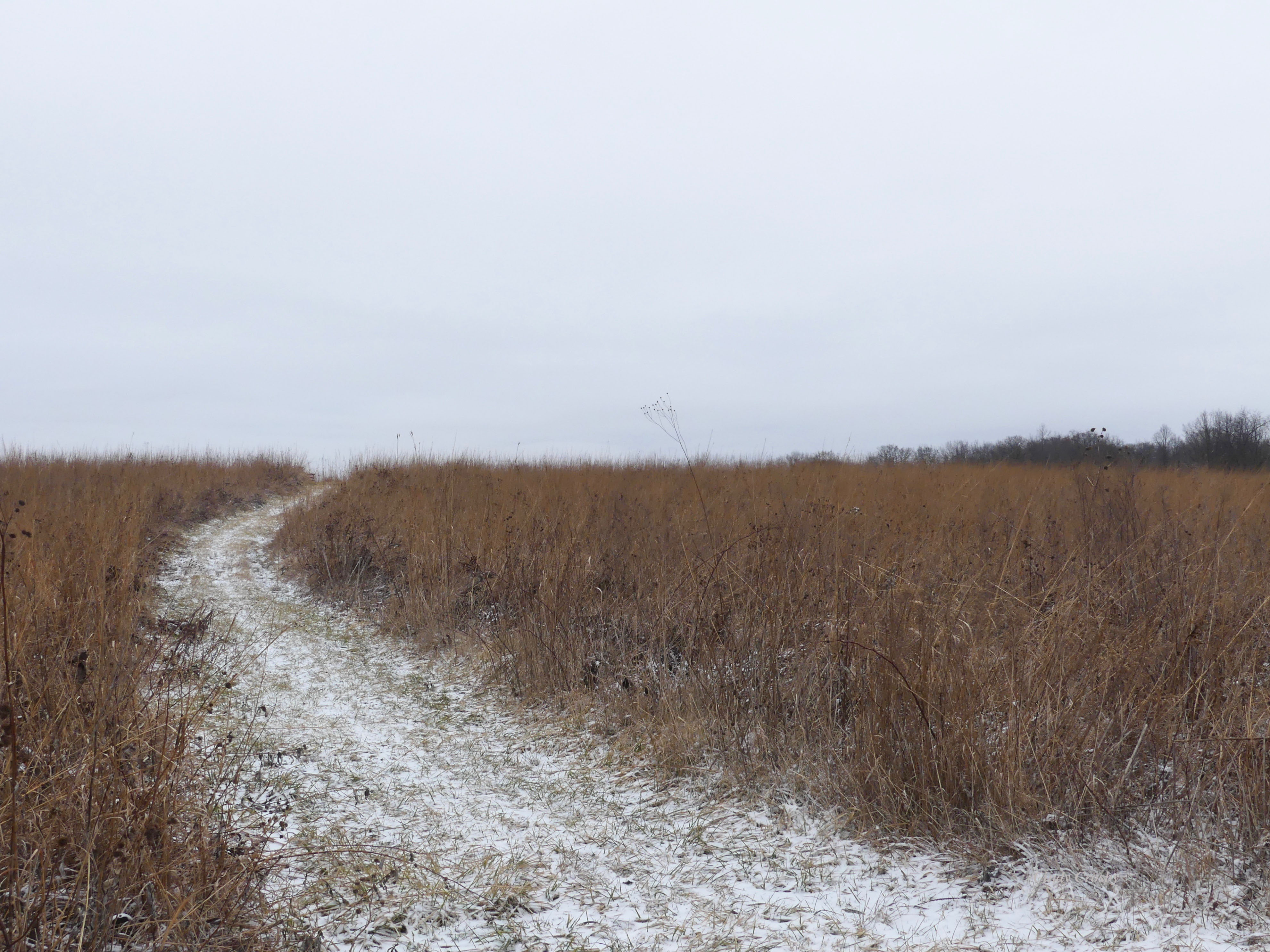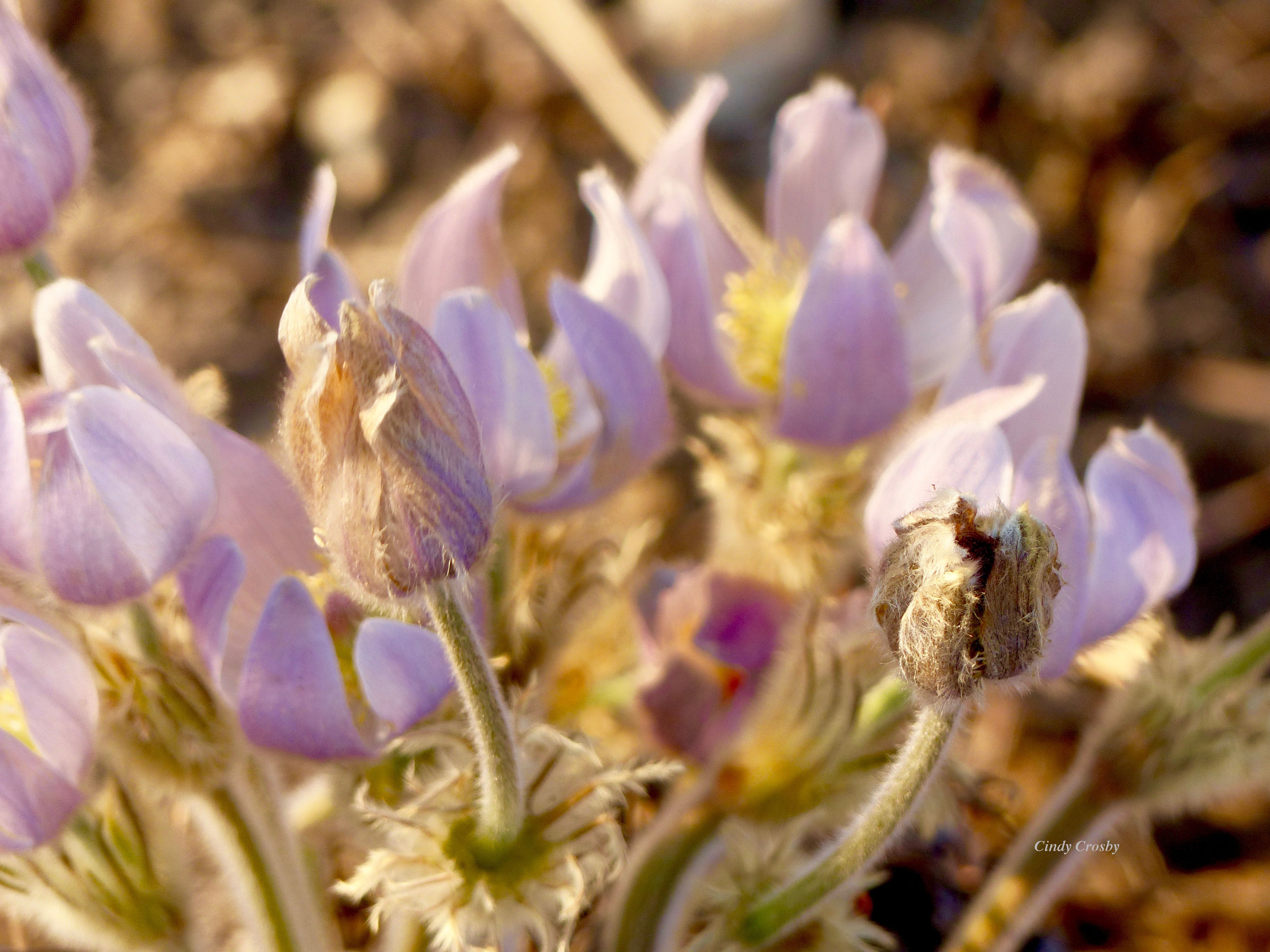“The important thing is to not stop questioning. Curiosity has its own reason for existence. One cannot help but be in awe when he contemplates the mysteries of eternity, of life, of the marvelous structure of reality. It is enough if one tries merely to comprehend a little of this mystery each day.” —Albert Einstein
*****
March slams the brakes on spring. Where did those 70 degree days go? We’re deep into a more “normal” March now in the Chicago region, with wind, rain, and snow flurries. And a few welcome surprises.

Out on the prairie, growth slows down. You can see the burned soil greening up under yesterday’s rain and last week’s snow melt. Tiny seedlings, seemingly defying identification, are everywhere. Kneel down. Take a closer look.
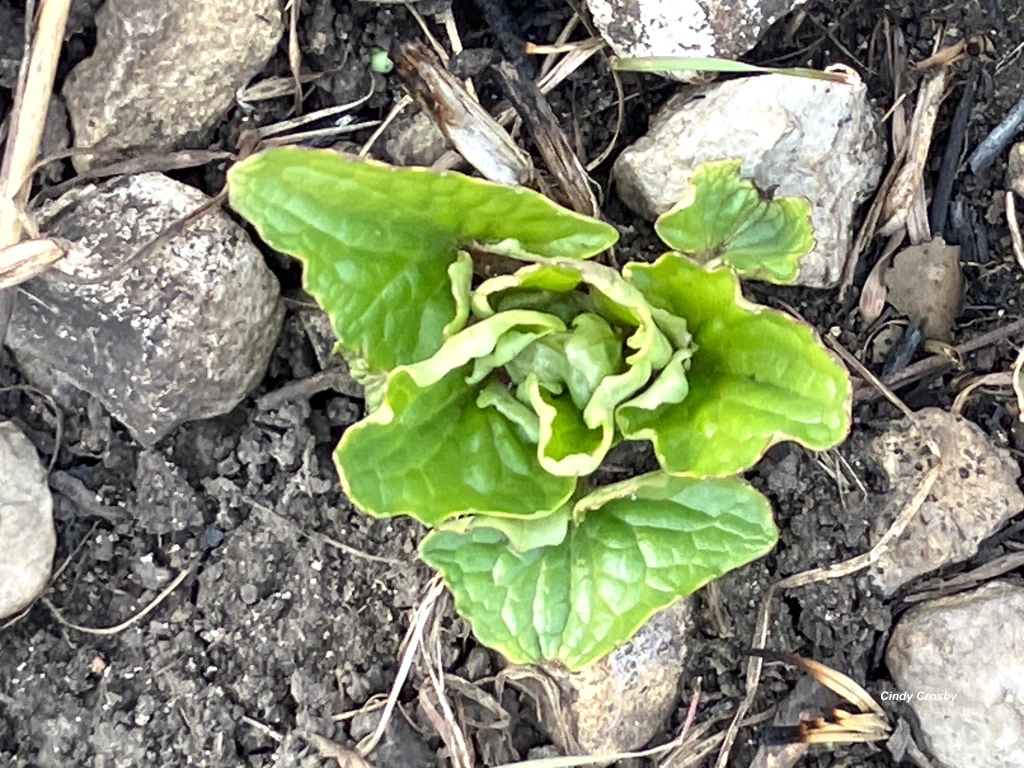
Aha! Pale Indian plantain. Amazing to think it will be taller than me by August! And over there—what about these ferny fronds?
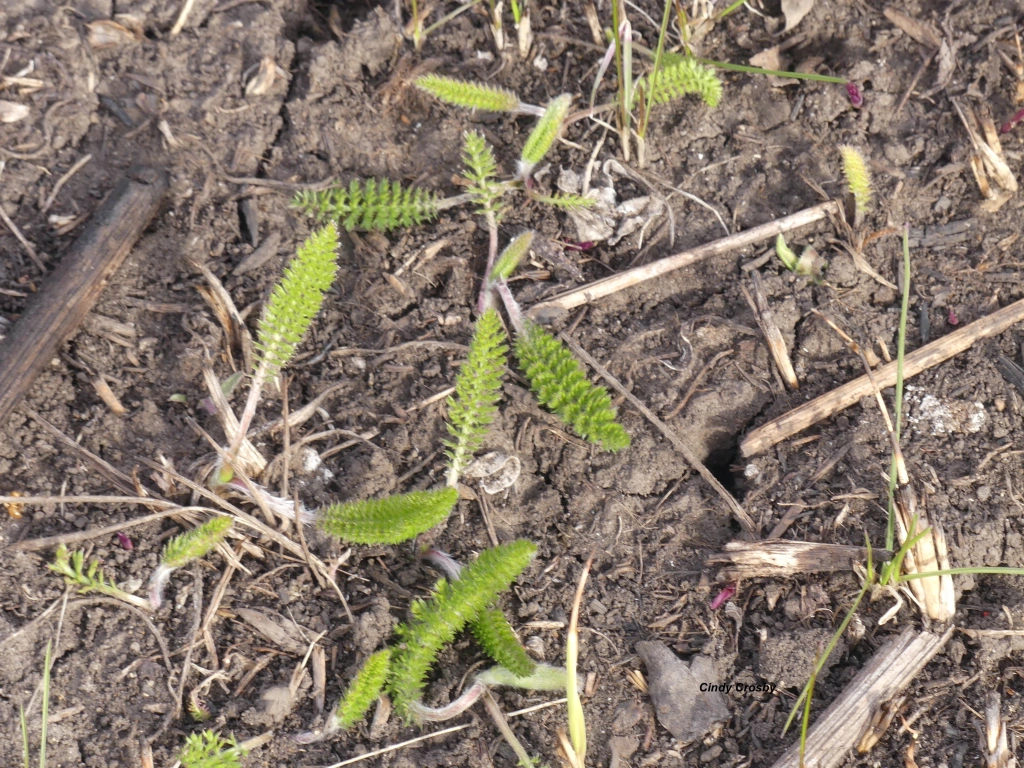
They could only be yarrow. Nearby, the native bloodroot is in all stages of growth.

The name “bloodroot” comes from the scarlet juice or sap that runs through the plant. “Sanguinaria” means “to bleed.”

Each bloom only lasts about three days. It’s another reason to go for lots of walks in the coming days, to marvel at and enjoy these pretty wildflowers before the blooms are gone for another season.
After last week’s post, I heard from many of you about the perils of “Siberian squill (Scilla siberica),” as well as appreciation for its spring color. This week, as I hike the prairie, I was again aware of just how much it is spreading in our natural areas. Can you see it?

I read up a bit, and control seems to be limited to digging it out (which has its own set of issues) or cutting off the flowers after they bloom, but before they set seed, a daunting task on larger natural areas. After listening to your thoughts from last week, I’m considering trying the “cut flower” method in my yard to see if it slows it down next year. It’s more difficult in a natural area, as the scilla intermingles with spring native wildflowers.
I keep on walking, shaking my head. It’s easier to control plants like garlic mustard, which aren’t quite so pretty, isn’t it? Let’s cross one of the tributaries of Willoway Brook, running shallow, cold and clear.

There’s still ice in the shaded edges, telling me that winter hasn’t quite loosened its grip. And yet… . continue to the gravel two-track. Look down around your feet.

Do you see it? “Early Whitlow grass” in bloom. Right in the middle of the path.
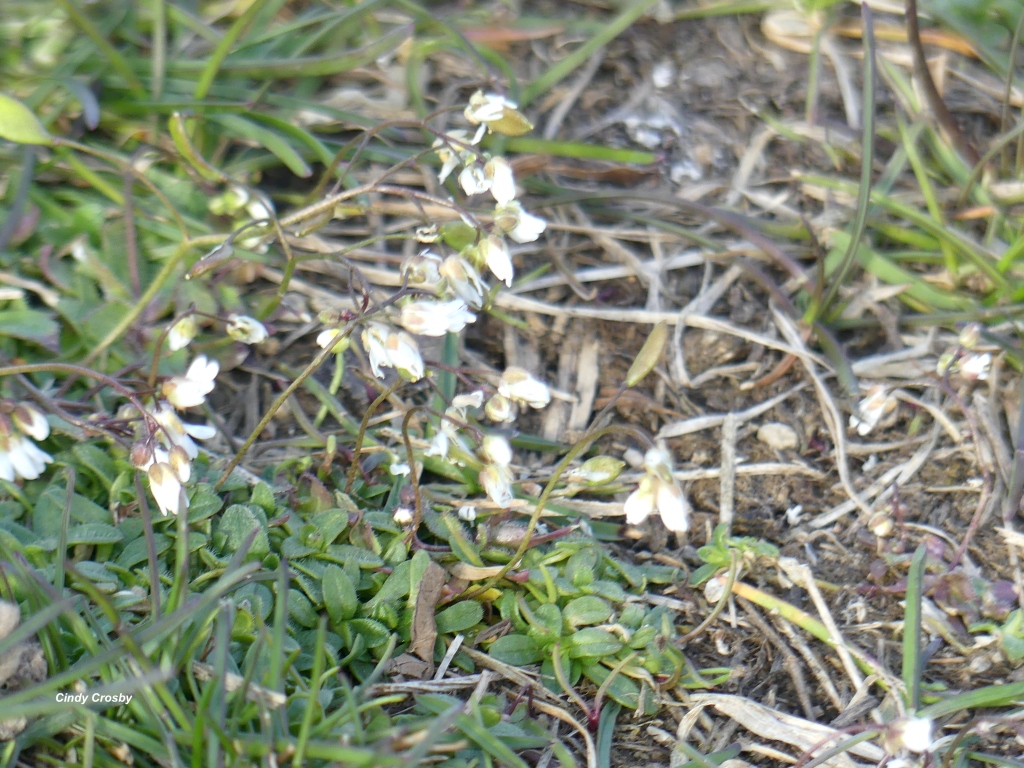
At this time of year, any flowers, no matter how tiny, are welcome.
A great blue heron silently flaps over. I listen to the crescendo calls of a northern flicker in an old black walnut. A “bobbin” of robbins land in the trees edging prairie, filling the evening air with their whinnying. Interspersed with the robins are the brown-headed cowbirds, singing in whistles and clinks. A killdeer scurries by, distracting me from her nest hidden on the prairie.
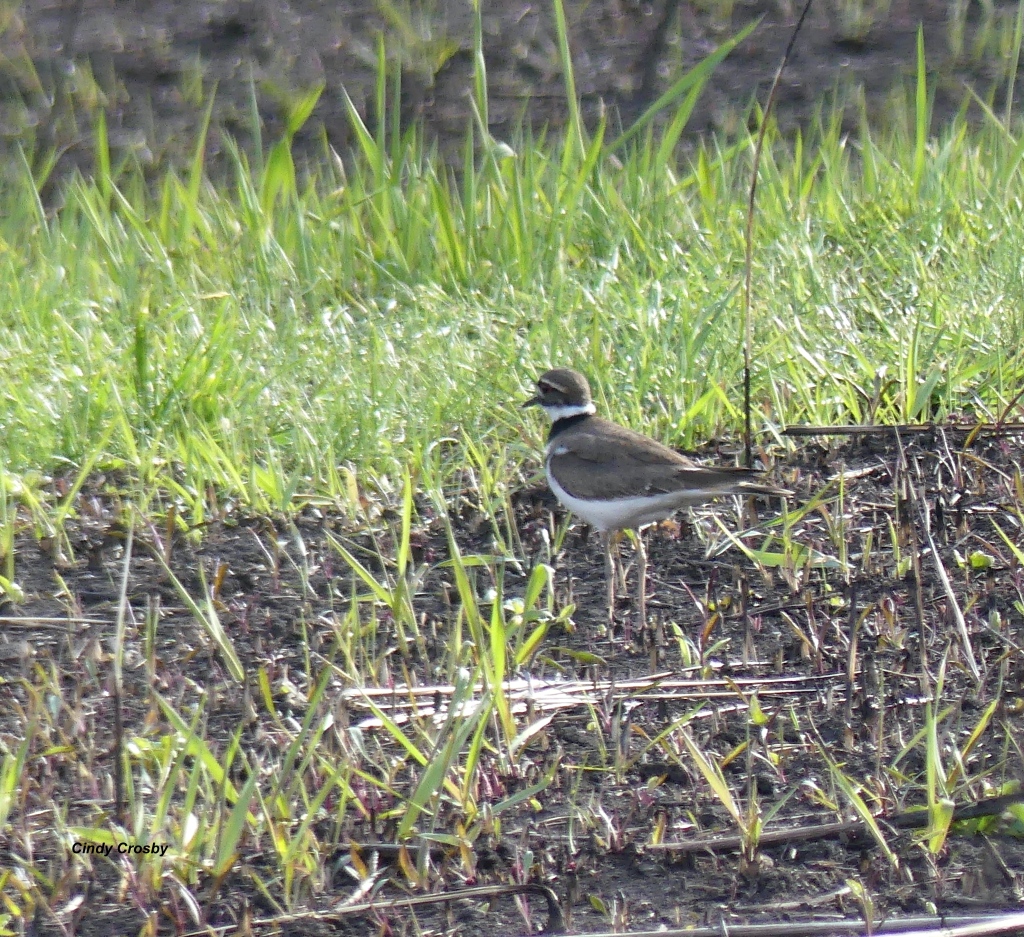
Not far away, I see the first blooms of our native pasque flowers.

We’ve worked hard to bring them back from the brink of loss here on the prairie.

It’s a joy to see the outcome of so many years of planning, seeding, planting, and care. The pasque flowers traditionally bloom around Easter, and are some of the first prairie wildflowers to open. This year, with Easter on Sunday, March 31, they are early, but in relative sync with the holiday.

Welcome back, little pasque flowers!
Come on, spring. Put your foot on the accelerator. You teased us with early warm days in February, and we were alarmed at how quick you were arriving.
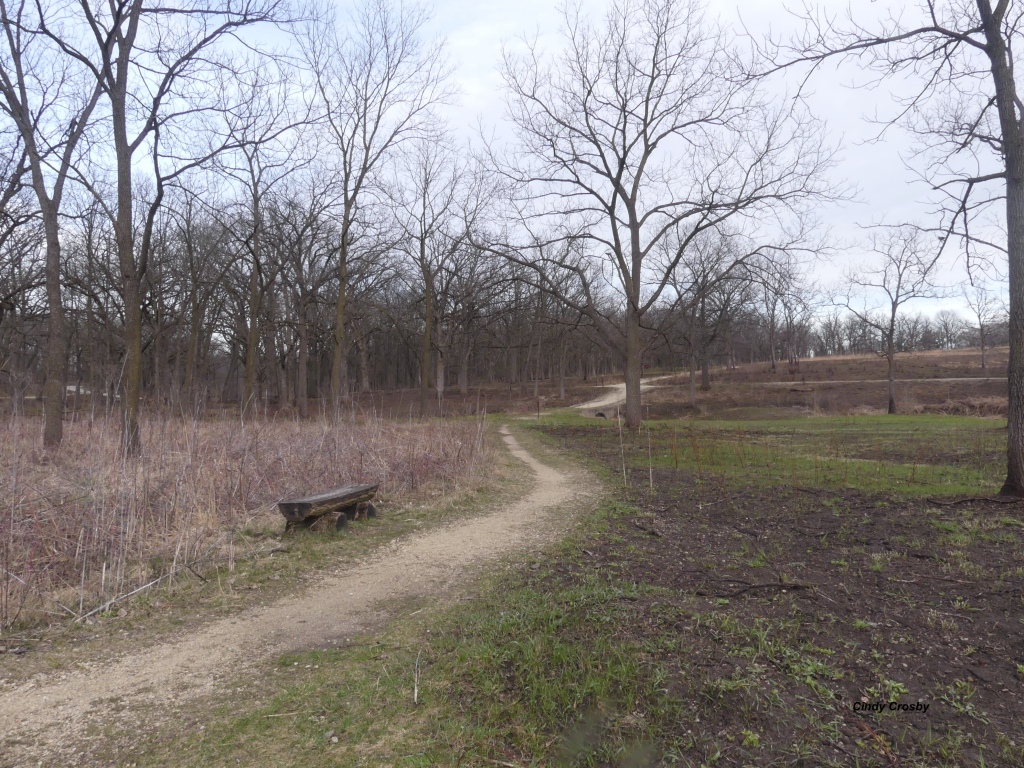
Now, we’re ready for you.
*****
The opening quote is from Albert Einstein (1879-1955), by many accounts one of the greatest scientists of all time. After Hitler came to power in the 1930’s, Einstein (who was a German and Jewish, visiting in the United States) became an American citizen. He published hundreds of books and articles during his lifetime.
*****
Join Cindy for a Program or Class this Spring:
Friday, March 29, 10-11:30am—“Dragonflies and Damselflies: The Garden’s Frequent Fliers,” presented by Gardeners of the Shores, 64 Old Barn Rd, Barrington, IL. Free and open to the public.
Thursday, April 4, 7-8:30 p.m. —“Dragonflies and Damselflies: The Garden’s Frequent Fliers,” presented by Roselle Park Garden Club, Roselle, IL. Free and open to the public. More information here.
Tuesday, April 9, 7:30-9 p.m.—“Illinois’ Wild and Wonderful Early Bloomers,” for the Northwest Audubon Society Annual Banquet, Highland Community College, Freeport, IL. Banquet begins at 6 p.m.. For ticket and registration information, visit here.
Friday, April 19, 8-9 p.m.–“Dragonflies and Damselflies: The Garden’s Frequent Fliers,” presented by the Midwest Pond and Koi Society.” White Fence Farm, Romeoville, IL. Optional dinner before the program; program is free and open to the public, but please visit here for more information.
More programs and events at cindycrosby.com.





































